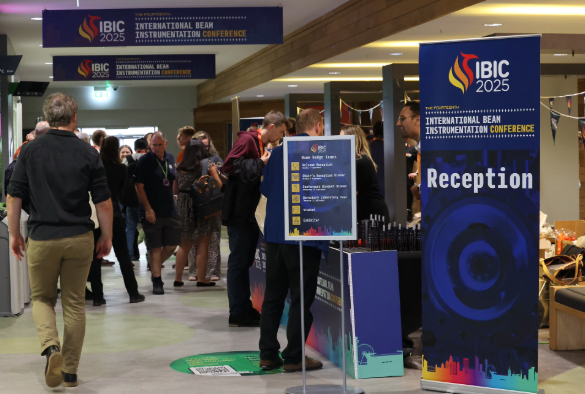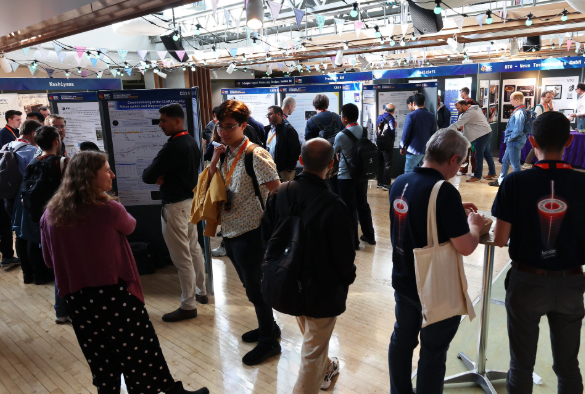The University of Liverpool, in partnership with STFC, the Cockcroft Institute and the John Adams Institute, has successfully hosted the largest-ever European edition of the International Beam Instrumentation Conference (IBIC 2025).
Held from 7-10 September, the 14th edition of the conference brought more than 300 world-leading experts to the University's campus to discuss the latest developments and exchange knowledge in beam instrumentation.
Over the course of the week, delegates took part in keynote and invited talks, contributed presentations, an industry exhibition and were able to view more than 200 scientific posters.

Distinguished speakers included Liverpool's Vice Chancellor Professor Tim Jones, Dame Jocelyn Bell-Burnell (Oxford), Dr Tom Shea (ESS Sweden), Dr Joe Wolfenden (Plasma Accelerator Research Fellow at Liverpool), Dr Benjamin Rienaecker (Physics Coordinator of the AEgIS experiments at CERN), and Professor Mark Thomson, CERN.
Beam instrumentation plays a vital role in advancing accelerator science and its applications. Without a comprehensive set of sensors and monitors, accelerators and light sources could simply not be operated, let alone optimized. International collaboration is key to push technologies beyond current limits, and IBIC 2025 offered a fertile ground for discussions.
Liverpool has an internationally recognized track record in this area through the Cockcroft Institute and in particular the QUASAR Group. Researchers here have led the development of novel optical beam loss monitors, high-resolution optical diagnostics, and non-invasive gas-jet profile monitors, as well as contributing to projects at CERN and other leading laboratories worldwide. These advances are also finding applications beyond physics, for example in improving cancer treatment with proton therapy.

Professor Carsten P. Welsch, Head of Accelerator Science at the University of Liverpool, and Chair of IBIC 2025, said: "Hosting IBIC 2025 in Liverpool allowed us to shine a spotlight on the latest beam instrumentation advances, and to strengthen the international collaborations that drive real progress in beam diagnostics, medical accelerators, and frontier physics. It was wonderful to have such engaged discussions with research leaders from around the world."
In parallel to the conference, the university has hosted the Code of the Universe travelling exhibition. This interactive exhibition gives an exciting insight into the science and technology of particle physics and accelerators.
Professor Welsch added: "The success of IBIC 2025 was made possible due to the hard work of the scientific programme and organizing committees, as well as the support of exhibitors, sponsors and partner institutions and I would like to thank everyone for their contribution and support."
Photos from the event, interviews, pre-press proceedings and much more information can be found on http://www.ibic2025.org.







